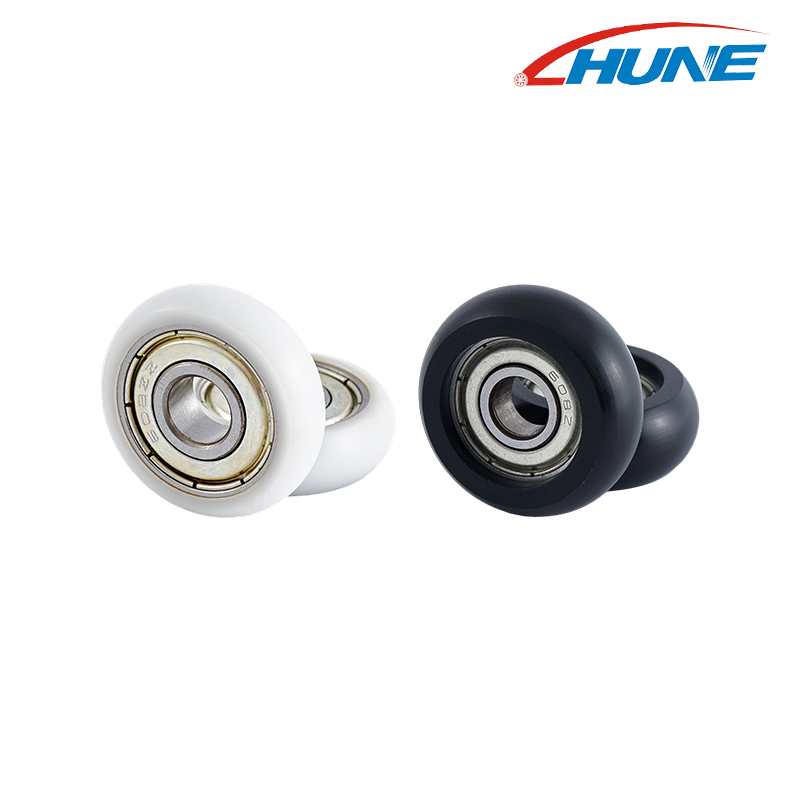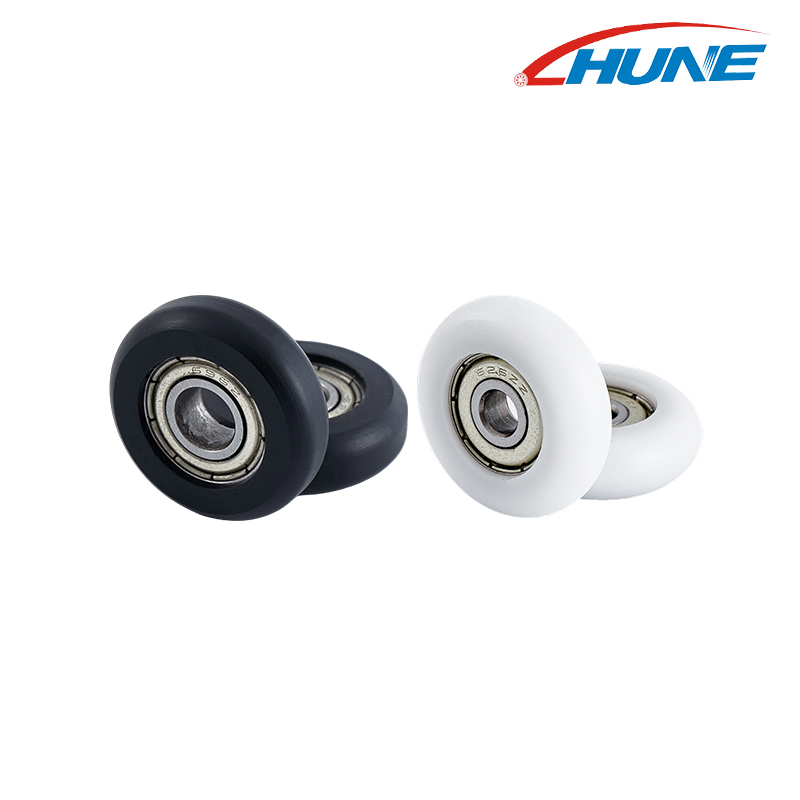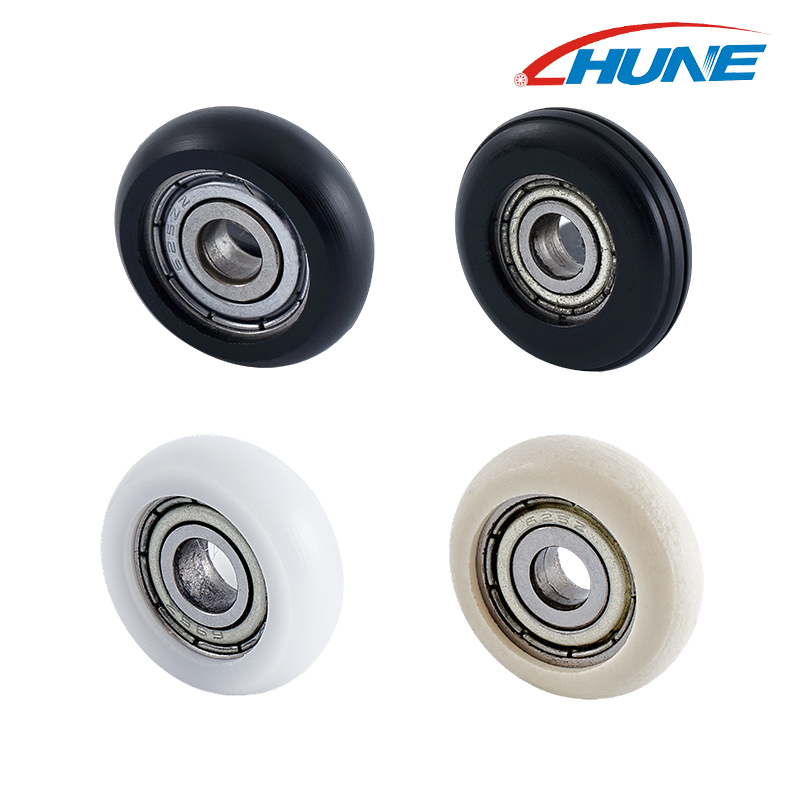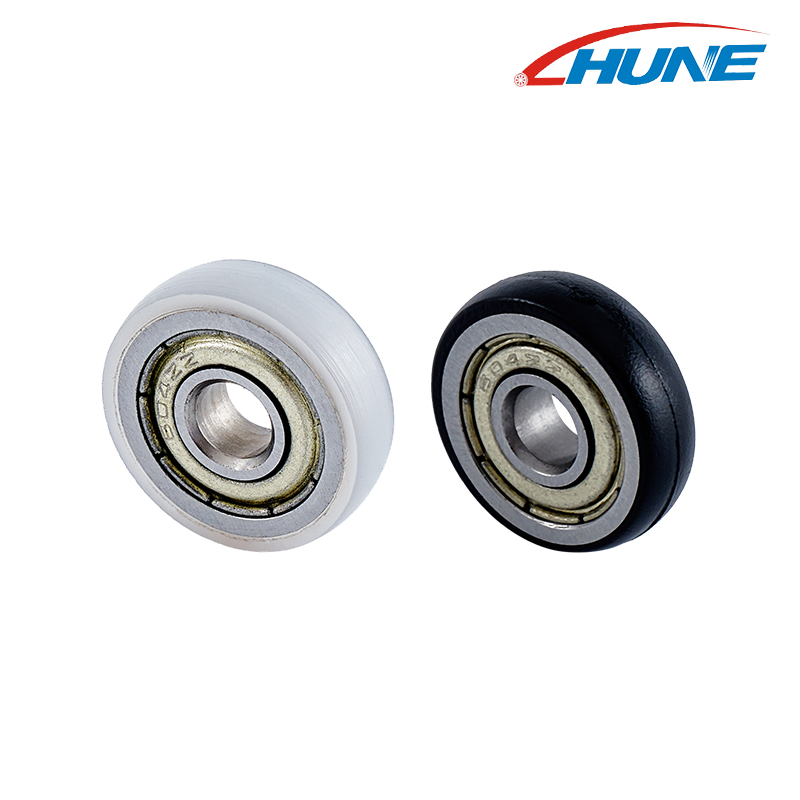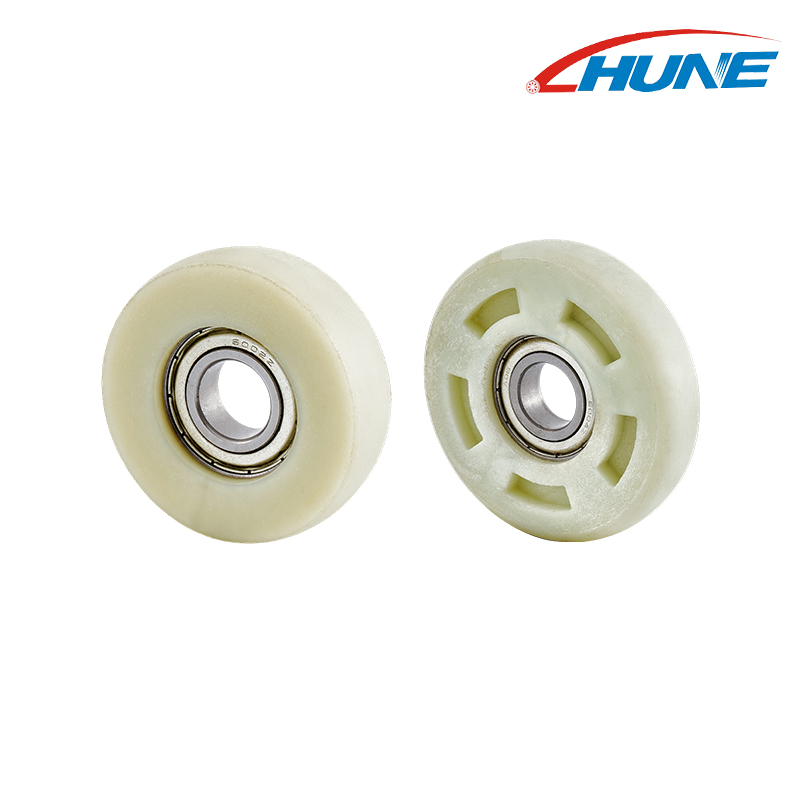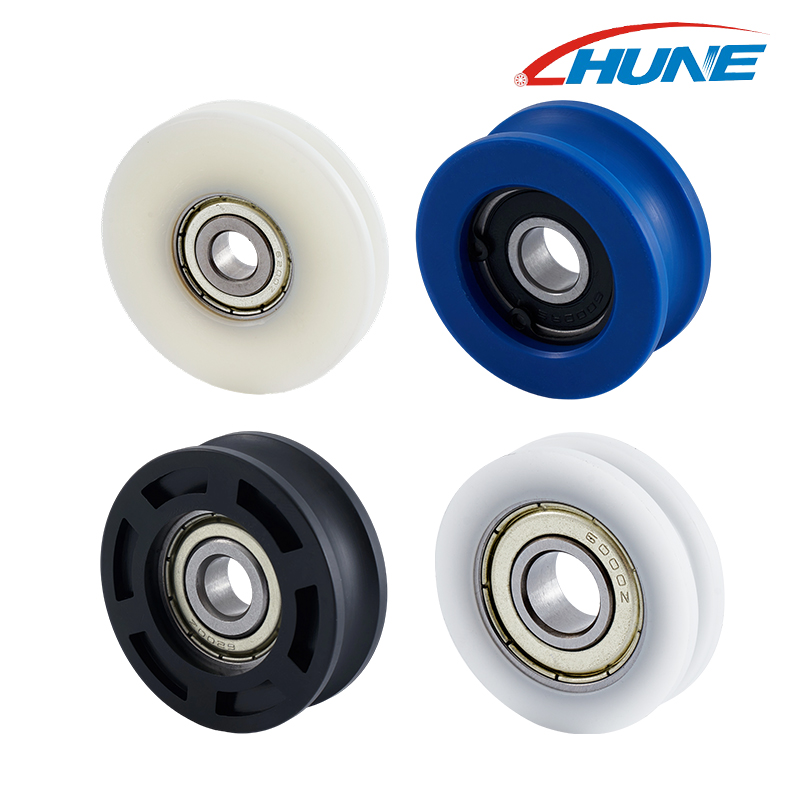1. What Are Ball Bearings and How Do They Work?
Introduction
Ball bearings are a fundamental component in mechanical engineering, widely used to facilitate smooth rotational or linear movement between parts while minimizing friction. Although small and often unseen, their role is crucial in improving the efficiency and durability of countless devices and machines.
This section will take a deep dive into the anatomy of ball bearings, how they function, the different types available, and the basic principles behind their friction-reducing abilities.
The Anatomy of a Ball Bearing
At first glance, a ball bearing seems simple—a circular metal object with small spheres inside. However, its design is precise and engineered for optimal performance.
Inner race: This is the smaller ring that usually attaches to the rotating shaft. It turns along with the shaft.
Outer race: The larger ring, typically stationary and mounted inside a housing.
Balls: The spherical rolling elements that separate the inner and outer races.
Cage (retainer): This is a separator that spaces the balls evenly and keeps them from touching each other, preventing friction and wear.
Each of these parts is manufactured to exact specifications to ensure the bearing operates smoothly, even at high speeds and under significant loads.
The Operating Principle: From Sliding to Rolling
Friction is a natural force that resists motion when two surfaces slide against one another. In machines, friction causes energy loss, heat, and wear on parts, reducing efficiency and component life.
Ball bearings transform sliding friction into rolling friction by inserting balls between the inner and outer races. Rolling friction is significantly lower because the balls roll rather than slide. This simple shift drastically reduces resistance.
Sliding friction: When two flat surfaces slide against each other, microscopic peaks and valleys cause resistance.
Rolling friction: When a ball rolls over a surface, contact occurs at a single point rather than over an area, lowering resistance.
By converting sliding to rolling friction, ball bearings allow shafts and other components to rotate more freely, using less energy.
Types of Loads Supported by Ball Bearings
Understanding the loads a bearing will face is key to selecting the right type:
Radial load: The force perpendicular to the shaft axis, pushing inward or outward on the bearing. For example, the weight of a wheel pressing down on its axle.
Axial (thrust) load: The force parallel to the shaft axis, pushing along the shaft length. This could happen in a screw mechanism where force is applied along the shaft direction.
Most ball bearings are designed to handle moderate axial loads alongside radial loads, but heavy axial loads usually require specialized thrust bearings.
Different Types of Ball Bearings and Their Features
Various types of ball bearings exist to meet different mechanical demands:
Deep Groove Ball Bearings
The most common type, they have uninterrupted raceways and are capable of handling high radial loads and moderate axial loads in both directions. They are versatile and widely used.
Angular Contact Ball Bearings
Designed with raceways that contact the balls at an angle, these bearings handle higher axial loads in one direction along with radial loads. Common in high-speed applications like machine tools.
Self-Aligning Ball Bearings
These have two rows of balls and a common concave outer raceway, allowing for shaft misalignment without increasing stress on the bearing. Useful in applications where shaft deflection occurs.
Thrust Ball Bearings
Specialized for axial loads only, typically found in low-speed applications like turntables or automotive clutches.
Materials Used in Ball Bearings
The choice of material affects bearing performance, lifespan, and cost:
Steel: Most ball bearings use high carbon chromium steel (e.g., AISI 52100), offering excellent hardness and wear resistance.
Ceramics: Silicon nitride or zirconia balls are lighter, harder, and more heat resistant than steel, ideal for high-speed or high-temperature environments.
Hybrid bearings: Combine ceramic balls with steel races, balancing cost and performance.
Manufacturing Process Overview
Producing ball bearings requires precision machining and surface finishing:
Forging and machining: Races and balls are forged or machined to rough shapes.
Heat treatment: Hardens components for wear resistance.
Grinding and polishing: Creates smooth surfaces essential for low friction and long life.
Assembly: Balls are placed between races and held with a cage.
Quality control measures like dimensional checks, surface roughness measurements, and fatigue testing ensure reliability.
The Role of Ball Bearings in Reducing Wear and Energy Loss
Without bearings, rotating shafts would slide directly against their housings, causing excessive friction, heat, and rapid wear. Ball bearings provide a rolling interface that:
Minimizes surface contact area.
Maintains lubrication films.
Reduces mechanical stress.
This reduction in friction means machines consume less energy, run cooler, and have longer service intervals.
Ball bearings are precision-engineered components that convert sliding friction into rolling friction to support radial and axial loads. Their basic design includes inner and outer races, balls, and a cage, with variations suited for different load and speed conditions. The choice of materials and manufacturing quality profoundly impacts their performance.
Understanding these fundamentals helps users appreciate how ball bearings contribute to the smooth operation of everything from small electric fans to large industrial machines.
2. What Are the Common Applications of Ball Bearings?
Ball Bearings in Everyday Life
One of the reasons ball bearings are so ubiquitous is their presence in common household items, often unnoticed but critical to performance.
Home appliances: Washing machines rely on ball bearings in their drum shafts for smooth rotation and durability. Vacuum cleaners use bearings in motors and wheels for quiet and efficient operation. Ceiling fans and air conditioners contain ball bearings to reduce noise and friction while maintaining continuous rotation.
Consumer electronics: Cooling fans inside computers and gaming consoles utilize miniature ball bearings to ensure quiet, reliable airflow, preventing overheating. Hard drives, a vital data storage component, depend on precision ball bearings to spin disks at high speeds with minimal vibration.
Bicycles and personal transportation: Wheel hubs, pedal cranks, and headset assemblies use ball bearings to minimize friction, allowing smoother pedaling and better control. Skateboards and rollerblades also rely on ball bearings for wheel rotation.
Automotive Industry Applications
The automotive sector is one of the largest users of ball bearings, where performance, safety, and longevity are critical.
Wheel hubs: Bearings support the vehicle’s weight and enable wheels to spin freely with minimal resistance.
Transmission systems: Bearings reduce friction between gears and shafts, improving efficiency and power transfer.
Engines: Various components such as camshafts, crankshafts, and alternators depend on ball bearings to maintain precise rotational movement under high loads and temperatures.
Steering systems and suspension: Bearings help absorb shocks and ensure smooth steering response.
Electric vehicles: With fewer moving parts than combustion engines, electric vehicles still depend heavily on bearings in motor rotors, cooling fans, and wheels.
The automotive industry's demand for ball bearings has driven innovations like sealed and maintenance-free bearings to withstand harsh conditions like dust, moisture, and temperature extremes.
Industrial Machinery and Manufacturing
In manufacturing, the continuous operation of equipment demands reliable, long-lasting bearings.
Electric motors and pumps: Bearings support rotating shafts, reducing energy consumption and preventing overheating.
Conveyors and material handling: Ball bearings in rollers and idlers allow heavy loads to move smoothly and efficiently.
Machine tools: Precision ball bearings ensure accurate spindle rotation in lathes, milling machines, and grinders, where even slight deviations affect product quality.
Robotics: Bearings enable precise joint articulation and smooth movement, crucial for automated assembly lines and medical robots.
In these sectors, ball bearings often operate under high loads, speeds, and temperatures, making durability and reliability key factors.
Aerospace and Defense
Aerospace engineering places extraordinary demands on ball bearings due to the need for lightweight, high-strength, and reliable components.
Jet engines: Bearings support high-speed turbine shafts exposed to extreme heat and stress.
Landing gear: Bearings in wheel assemblies absorb impact forces during takeoff and landing.
Flight control systems: Bearings ensure smooth movement of flaps, rudders, and other control surfaces.
Space applications: Bearings used in satellites and spacecraft must endure vacuum, radiation, and extreme temperature variations.
To meet these challenges, aerospace bearings often use advanced materials like ceramics and special lubricants to maintain performance under harsh conditions.
Medical Devices and Precision Instruments
Ball bearings play a vital role in medical equipment where precision and reliability can impact patient outcomes.
Diagnostic machines: MRI and CT scanners use bearings for rotating components requiring stable, low-vibration movement.
Surgical tools: High-speed drills and robotic surgery arms depend on miniature bearings for smooth, precise motion.
Laboratory equipment: Centrifuges and microscopes incorporate bearings to maintain accurate rotation and positioning.
In these applications, contamination resistance and minimal maintenance are critical, leading to the use of sealed or hybrid ceramic bearings.
Emerging and Specialized Applications
Advancements in technology continue to expand the scope of ball bearing usage.
Electric bicycles and scooters: Lightweight, efficient bearings improve battery life and ride quality.
Drones and UAVs: Miniature bearings enable quiet and efficient rotor spinning.
Renewable energy: Bearings in wind turbine generators endure high loads and variable speeds.
3D printers: Bearings facilitate precise, smooth movements of printing heads and beds.
Each emerging application places unique demands on bearing design, including miniaturization, corrosion resistance, and integration with smart sensors for predictive maintenance.
Why Ball Bearings Are Preferred in So Many Applications
Efficiency: By significantly reducing friction, ball bearings improve energy use and reduce operational costs.
Durability: High-quality bearings withstand heavy loads and harsh environments, extending machinery life.
Versatility: Suitable for a wide range of load types and speeds.
Compactness: Ball bearings can be small and lightweight, fitting into tight spaces.
Ease of replacement and maintenance: Standardized sizes and types simplify servicing.
From household gadgets to aerospace vehicles, ball bearings are a cornerstone technology that enables efficient, reliable motion. Their adaptability to diverse operating conditions and ability to support combined loads make them indispensable across countless fields. As technology evolves, ball bearings continue to advance, meeting new challenges with innovations in materials, design, and smart monitoring.
3. What Factors Affect Ball Bearing Performance and Longevity?
Ball bearings are engineered for durability and smooth operation, but their performance and lifespan depend on multiple interacting factors. Understanding these elements helps ensure bearings operate reliably, avoid premature failure, and reduce maintenance costs. This section explores the key influences on ball bearing behavior, from mechanical loads and lubrication to environmental conditions and installation practices.
Load and Speed: The Fundamental Influencers
Load Capacity and Its Impact
Every bearing is designed to withstand specific radial and axial loads. Operating a bearing under loads exceeding its rated capacity accelerates wear and causes deformation of the balls and races. This can lead to:
Increased friction: Damaged surfaces create rough contact.
Fatigue: Repeated stress cycles cause microscopic cracks, eventually leading to spalling.
Heat generation: Higher friction produces heat, degrading lubrication.
Designers must carefully match bearing selection to the expected load conditions to avoid these issues.
Speed Limits and Their Consequences
Bearings have maximum speed ratings determined by ball size, cage design, and lubrication type. Exceeding these speeds causes:
Centrifugal forces: Push balls outward, increasing stress on the cage.
Lubricant breakdown: At high speeds, lubricants may thin or evaporate, reducing protection.
Excess heat: Frictional heat can exceed bearing material limits.
Operating within speed limits preserves bearing integrity and reduces risk of failure.
Lubrication: The Lifeblood of Ball Bearings
Proper lubrication is perhaps the single most critical factor influencing bearing longevity.
Functions of Lubrication
Friction reduction: Creates a thin film separating metal surfaces.
Wear prevention: Minimizes direct contact and surface damage.
Corrosion protection: Inhibits rust caused by moisture or contaminants.
Heat dissipation: Transports heat away from contact areas.
Types of Lubricants
Greases: Thick, semi-solid lubricants that stay in place; suitable for most general applications.
Oils: Provide better heat dissipation and are used in high-speed or precision applications.
Solid lubricants: Such as graphite or molybdenum disulfide, used in extreme conditions.
The choice depends on operating temperature, speed, load, and environment.
Lubrication Challenges
Contamination: Dirt or water can degrade lubricant properties.
Lubricant aging: Over time, lubricants oxidize or lose viscosity.
Insufficient quantity: Under-lubrication leads to metal-to-metal contact.
Over-lubrication: Excess grease causes increased friction and heat.
Proper lubrication schedules and correct lubricant types are essential for reliable bearing performance.
Environmental Factors Affecting Bearings
Ball bearings rarely operate in perfect, controlled conditions. Environmental stresses significantly impact their performance.
Temperature Extremes
High temperatures: Can degrade lubricant, reduce hardness of bearing steel, and cause thermal expansion leading to tighter clearances.
Low temperatures: Increase lubricant viscosity, making initial movement difficult, and may cause brittleness.
Bearings designed for specific temperature ranges use special lubricants and materials.
Contamination
Dust, dirt, water, and chemicals entering a bearing cause abrasive wear and corrosion.
Seals and shields are critical for protecting bearings.
Clean assembly environments reduce contamination risk.
Vibration and Shock Loads
Sudden impacts or continuous vibration cause micro-movements and surface damage, accelerating fatigue and wear.
Installation and Alignment: Getting It Right
Improper installation is a leading cause of premature bearing failure.
Common Installation Errors
Using excessive force: Hammering bearings onto shafts can cause brinelling (indentations).
Incorrect mounting tools: Using inappropriate tools damages races or balls.
Misalignment: Causes uneven load distribution, leading to high local stresses.
Best Practices
Use press-fit or thermal expansion methods for mounting.
Ensure shaft and housing tolerances meet specifications.
Check alignment using dial indicators or laser tools.
Correct installation maximizes bearing life and prevents early issues.
Maintenance and Monitoring
Regular inspection and maintenance allow early detection of issues.
Inspection Techniques
Visual checks: Look for rust, discoloration, or lubricant leakage.
Noise monitoring: Unusual sounds can signal damage.
Vibration analysis: Detects imbalance or misalignment.
Temperature monitoring: Excessive heat indicates friction or lubrication failure.
Predictive Maintenance
Advanced systems use sensors embedded in bearings to track condition in real-time, enabling proactive replacement before catastrophic failure.
Summary
Ball bearing performance and longevity depend on a complex interplay of load, speed, lubrication, environment, installation quality, and maintenance. Careful attention to these factors ensures smooth operation, reduces downtime, and extends equipment life. By selecting the right bearing, applying proper lubrication, protecting against contamination, and following correct installation and maintenance protocols, users can maximize the benefits ball bearings provide.
4. How to Choose the Right Ball Bearing for Your Needs?
Selecting the appropriate ball bearing is crucial for ensuring optimal performance, durability, and cost-effectiveness in any application. Given the wide variety of types, sizes, materials, and specifications, the choice can be complex. This section breaks down the key considerations into clear steps to guide you through making an informed decision.
4.1 Understand the Load Requirements
The first step is to analyze the forces the bearing will need to handle.
Radial load: Determine the magnitude and direction of the load acting perpendicular to the shaft. Most common ball bearings are designed primarily for radial loads.
Axial load: Assess any forces along the shaft axis. If significant axial loads exist, consider angular contact or thrust ball bearings.
Combined loads: Many applications have both radial and axial forces; choose bearings that can support the combined loading without compromising life.
Knowing the exact load values helps in selecting bearings with suitable dynamic and static load ratings.
4.2 Determine Speed and Operating Conditions
Bearings are rated for maximum speeds depending on their design and lubrication.
Operating speed: Calculate the shaft rotation speed (RPM) and ensure the bearing’s rating exceeds this to avoid overheating or premature wear.
Temperature range: If the application involves extreme temperatures, choose bearings with compatible materials and lubricants.
Environmental factors: Consider contamination, moisture, vibration, and shock loads that may affect bearing choice. Sealed or shielded bearings provide better protection.
4.3 Size and Dimensional Constraints
Space and compatibility often limit bearing size.
Shaft diameter and housing bore: The bearing’s inner and outer diameters must fit the shaft and housing precisely.
Width and overall dimensions: Ensure the bearing fits within the assembly without interfering with other components.
Weight: For aerospace or portable devices, lighter bearings (ceramic hybrids) may be preferable.
Standardized dimensions ease replacement and reduce lead times.
4.4 Material and Lubrication Preferences
Material selection influences performance, lifespan, and cost.
Steel bearings: Offer excellent strength and are economical; suitable for most general applications.
Ceramic or hybrid bearings: Provide high-speed capabilities, corrosion resistance, and reduced weight but at higher costs.
Lubrication type: Decide between grease, oil, or solid lubricants based on speed, load, and maintenance accessibility.
4.5 Bearing Type Selection
Choose the specific type based on load and alignment needs:
Deep groove ball bearings: Best for high radial loads and moderate axial loads; versatile and common.
Angular contact bearings: For higher axial loads and precision applications.
Self-aligning bearings: When shaft misalignment or deflection is expected.
Thrust bearings: For axial loads only.
4.6 Maintenance and Service Considerations
Evaluate how often the bearing can be serviced or replaced.
Sealed/Shielded bearings: Require little to no maintenance, ideal for inaccessible or harsh environments.
Open bearings: Easier to clean and lubricate but need more frequent servicing.
Availability of spare parts: Ensure chosen bearings can be sourced easily for replacement.
Summary
Choosing the right ball bearing involves balancing load capacity, speed, environment, size constraints, material, and maintenance needs. By carefully analyzing these factors and matching them to bearing specifications, users can maximize reliability, efficiency, and cost savings in their machinery or products.
5. What Are Common Issues with Ball Bearings and How to Prevent Them?
Despite their robustness and precision engineering, ball bearings can encounter various problems during operation. These issues may lead to premature failure, increased maintenance costs, or even damage to the entire system. Understanding common problems and effective prevention strategies helps extend bearing life and ensure smooth operation.
5.1 Wear and Fatigue
Description:
Repeated stress cycles cause microscopic cracks and material fatigue, eventually resulting in surface flaking known as spalling.
Causes:
Overloading beyond rated capacity
Improper lubrication
Contamination by dirt or moisture
Prevention:
Select bearings with appropriate load ratings
Maintain proper lubrication schedules
Use seals and shields to prevent contamination
5.2 Lubrication Failure
Description:
Insufficient, excessive, or contaminated lubrication leads to increased friction, heat, and wear.
Causes:
Neglecting lubrication intervals
Using wrong lubricant types
Lubricant contamination or degradation
Prevention:
Follow manufacturer lubrication guidelines
Use correct lubricants for speed and temperature
Monitor lubricant condition and replace as needed
5.3 Misalignment
Description:
Shaft and bearing misalignment causes uneven load distribution, increased stress on balls and races.
Causes:
Incorrect installation
Shaft deflection or bending under load
Improper housing design
Prevention:
Use self-aligning bearings if misalignment is unavoidable
Ensure precise shaft and housing machining
Employ alignment tools during installation
5.4 Contamination
Description:
Ingress of dirt, dust, moisture, or chemicals can abrade surfaces and cause corrosion.
Causes:
Poor sealing or damaged seals
Dirty assembly environments
Exposure to harsh environments without protection
Prevention:
Install high-quality seals or shields
Assemble bearings in clean environments
Consider corrosion-resistant materials for harsh conditions
5.5 Excessive Noise and Vibration
Description:
Noise and vibration often indicate underlying bearing damage or imbalance.
Causes:
Surface roughness due to wear or damage
Imbalance in rotating components
Loose or damaged mounting
Prevention:
Conduct regular vibration analysis and noise monitoring
Ensure proper balancing of shafts and wheels
Maintain tight, correct mounting
5.6 Overheating
Description:
Excess heat reduces lubricant effectiveness and damages bearing materials.
Causes:
Excess friction from poor lubrication or contamination
Overloading or excessive speed
Inadequate heat dissipation
Prevention:
Use suitable lubricants for operating temperatures
Avoid operating beyond speed and load limits
Incorporate cooling mechanisms if needed
Summary
Many common ball bearing issues stem from preventable causes such as improper lubrication, contamination, misalignment, and overload. Proactive selection, installation, lubrication, and maintenance practices are essential to avoiding premature failures. With attention to these factors, bearings can provide years of reliable, low-friction operation, ensuring the smooth function of the machines and systems they support.
Ball bearings are fundamental components in countless mechanical systems worldwide. Their unique design allows for efficient rotation and load support by minimizing friction between moving parts. This summary encapsulates the key insights about ball bearings based on their characteristics, wide-ranging applications, performance factors, selection criteria, and typical problems encountered during operation.
Core Characteristics of Ball Bearings
Ball bearings operate by utilizing hardened steel or ceramic balls rolling between inner and outer races. This rolling motion drastically reduces friction compared to sliding contact, enabling smoother rotation and higher efficiency. Common features include:
Load support: They can handle both radial loads (perpendicular to the shaft) and axial loads (along the shaft axis), though different bearing types excel at different load combinations.
Speed capacity: Ball bearings support a wide range of rotational speeds, from slow-moving machinery parts to high-speed electric motors and turbines.
Design versatility: Available in multiple configurations — deep groove, angular contact, self-aligning, thrust — to meet specific application demands.
Durability: Engineered to withstand significant stress cycles, ball bearings ensure long operational lifetimes when used and maintained properly.
Their relatively compact size, low maintenance needs, and cost-effectiveness make them highly favored across many industries.
Diverse Applications Across Industries
Ball bearings are integral to everyday life, industrial machinery, automotive systems, aerospace, and emerging technologies.
Consumer products: Appliances like washing machines and vacuum cleaners, personal transportation devices such as bicycles and skateboards, and electronic cooling fans all rely on ball bearings for smooth, quiet operation.
Automotive: Bearings are essential in wheel hubs, transmissions, engines, steering systems, and electric vehicle motors, enabling safety, efficiency, and reliability.
Industrial machinery: Electric motors, pumps, conveyors, robotics, and machine tools use ball bearings to reduce friction and ensure precise motion under heavy loads.
Aerospace: Bearings in jet engines, landing gear, and flight controls face extreme stresses and require advanced materials and lubrication to maintain performance in harsh conditions.
Medical devices: Precision instruments, surgical tools, and diagnostic machines depend on miniature bearings for smooth, accurate movement.
Emerging fields: Electric bicycles, drones, wind turbines, and 3D printers represent new frontiers for bearing technology, emphasizing lightweight design, corrosion resistance, and integrated monitoring.
This broad application range underscores the critical role ball bearings play in enabling modern technology.
Factors Affecting Performance and Longevity
Ball bearing performance and life span hinge on several interconnected factors:
Load and speed: Bearings must be chosen to match the radial and axial loads and operate within rated speed limits to avoid premature wear, fatigue, or overheating.
Lubrication: Proper lubrication minimizes friction, dissipates heat, and prevents corrosion. The right lubricant type, quantity, and maintenance schedule are essential.
Environmental conditions: Temperature extremes, contamination by dust or moisture, vibration, and shock loads can degrade bearings unless adequately protected.
Installation and alignment: Accurate mounting and alignment prevent uneven stress distribution, a common cause of early failure.
Maintenance: Regular inspection, vibration analysis, noise monitoring, and lubrication upkeep extend bearing life and prevent unexpected breakdowns.
Advanced predictive maintenance techniques, including sensor integration, are increasingly used to monitor bearing health in real time.
Guidelines for Selecting the Right Ball Bearing
Choosing a suitable bearing involves balancing multiple factors:
Load requirements: Analyze expected radial, axial, and combined loads to pick a bearing with appropriate dynamic and static ratings.
Speed and environment: Match the bearing’s speed rating to application demands and consider operating temperature and contamination risks.
Size constraints: Ensure bearing dimensions fit the shaft and housing while considering weight requirements.
Material and lubrication: Decide between steel, ceramic, or hybrid bearings and select lubricants suited to speed, load, and maintenance conditions.
Bearing type: Select deep groove, angular contact, self-aligning, or thrust bearings based on load orientation and alignment needs.
Maintenance access: Consider sealed or shielded bearings for low-maintenance environments or open bearings where frequent servicing is possible.
Applying these criteria systematically helps optimize machine reliability and operational efficiency.
Common Problems and Preventative Strategies
Despite their robustness, ball bearings face typical challenges:
Wear and fatigue: Resulting from overload, poor lubrication, or contamination, leading to surface damage and failure.
Lubrication failure: Caused by incorrect lubricant use, contamination, or inadequate maintenance, raising friction and heat.
Misalignment: Leads to uneven load distribution and accelerated wear.
Contamination: Dirt, water, or chemicals entering bearings cause abrasive damage and corrosion.
Noise and vibration: Indicate imbalance, damage, or poor mounting.
Overheating: Due to friction, overload, or speed exceeding limits, degrading lubricant and materials.
Prevention involves proper selection, installation, lubrication, sealing, and maintenance practices. Employing condition monitoring technologies can also enable early detection and avoid costly downtime.
Ball bearings are vital components that enable efficient and reliable motion in an extraordinary variety of applications. Their successful use depends on understanding their operating principles, environmental influences, proper selection, and maintenance. As technology advances, innovations in materials, design, and smart monitoring continue to enhance bearing performance, extending their indispensable role in modern machinery and devices.






 English
English  Español
Español  日本語
日本語 